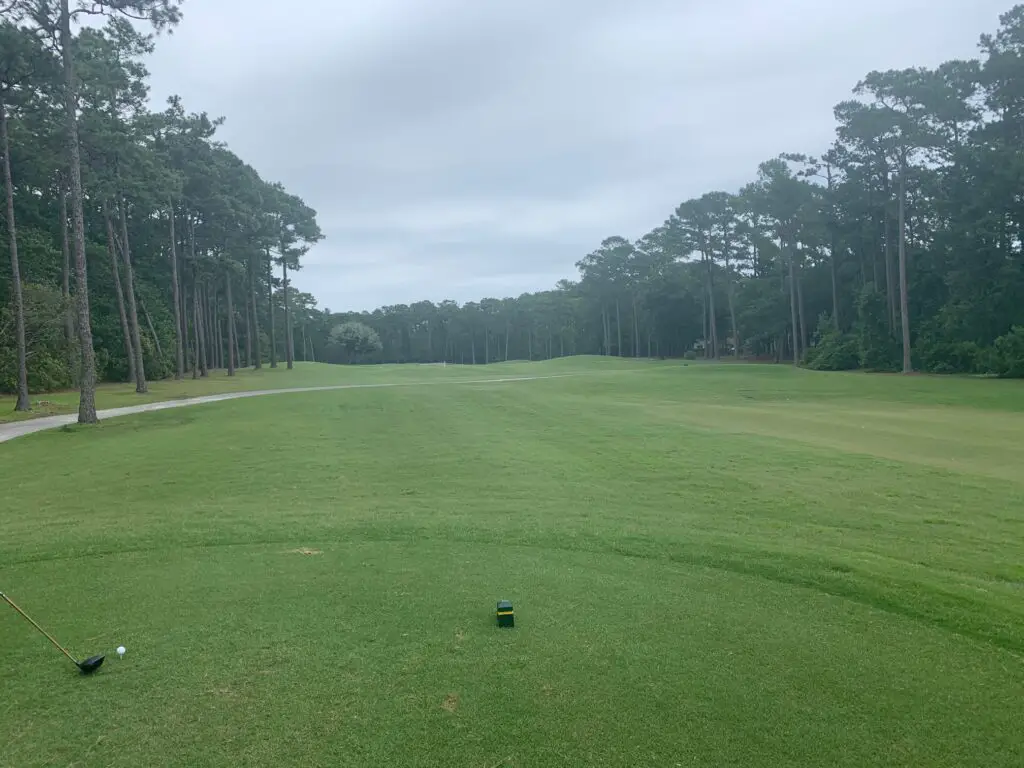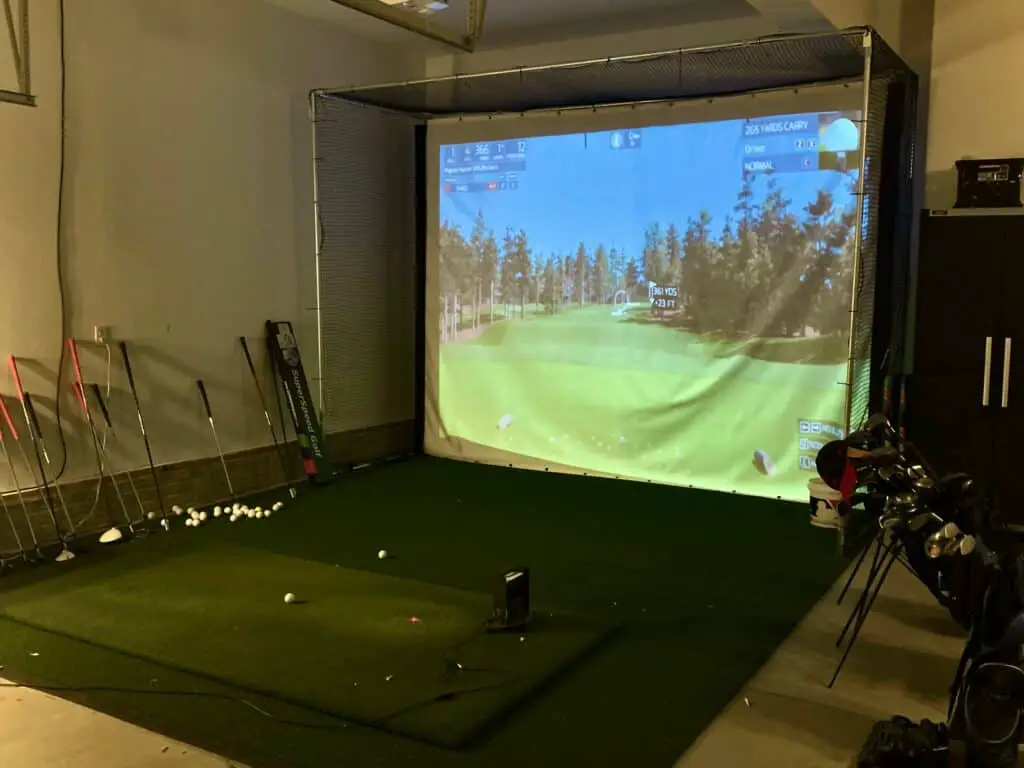5 Tips:
- Keep the ball in play
- Become a great short game player
- Consider the 14 clubs you are carrying in your bag
- Know your distances
- Train for additional speed
Golf is a game loved by so many.
The joys of being outside, with friends or family taking on the challenges of a round of golf is special. Many golfers seek as many opportunities as possibly to play golf and we understand!
Whether you are a short hitter or a long hitter, a junior or a senior, a high handicap or a low handicap there are on strategies you can use to improve your game and your overall score.
One of my favorite quotes in golf is, “they don’t ask how, they ask how many.” This is so true for the short hitter that is trying to keep up with his or her friends in tournaments or simple friendly competitions.
I was fortunate enough to start the game at age 10. One of the best parts about starting as a junior golfer is that you are often playing golf courses that are too long for how far you can hit a driver. As a result, you learn some of the strategies found below to help you score!
Golf Strategy For Short Hitters (5 Tips)
Update: The short game and training for more speed are the two most important things you can do to improve your game in the short term. Everyone can benefit from an improved short game, but when you are struggling to hit greens in regulation due to lack of distance, saving par more often is needed. The extra speed you can get can help change your game more permanently!

Tip #1: Keep the ball in play
We are big believers in keeping your strengths, your strengths and ensuring that you are able to capitalize on the advantage you might have. For example, many short hitters also hit the ball straight and can keep the ball in play.
They are rarely in the trees or find their ball out of bounds. This is an advantage over the longer hitter who might be in the trees one hole, might be out of bounds the next and then might finally hit a good driver. Meanwhile, you are plotting your way around the course, strategically hitting certain spots and giving yourself a reasonable chance at making par.
Part of keeping the ball in play also is connected to being around the green in regulation. The more times you can do this, the more reasonable chances you will have to make par. Over the course of 18 holes, keeping the ball in play and advancing it every opportunity possible when paired with a quality short game keeps you in play and in the competition.
Keep your strengths your strengths!
How to hit your driver straighter!
Tip #2: Become a great short game player
Continuing on with a tip related to keeping the ball in play, keeping the ball around the green in regulation with an amazing short game is a great recipe for success. Let’s break down the numbers. If you are able to hit 6 out of 18 greens in regulation (33%) that leaves 12 greens that you miss (66%).
Let’s assume you make the 6 pars on the holes you hit in regulation. One the other 12 holes, you are able to save par 6 times or 50% of the time. This gives you a total of 12 pars. If you kept the ball in play and avoided penalty strokes and 3 putts, you will have 12 pars and 6 bogeys for a total of 78 on a 72 hole course.
The formula or recipe is simple to understand, but takes time to master the short game. The great news about the short game is that it doesn’t take a great amount of speed, athletic ability or some physical gift to become a great chipper of the ball and putter.
It often comes down to time invested. A simple chipping motion with the right amount of practice can make a world of difference for many golfers.
Recommended Drill: Up and Down Challenge
- This game includes picking random spots around a practice green and challenging your short game.
- Pick 18 different spots around the green and track how many times out of 18 you are able to get up and down in 2 shots or less. (1 Chip, 1 Putt)
- You can also play a competition against another person at the green and see who can get up and down the most times out of 10 or play some match play.
- The competition will help prepare you for the actual course and the pressure that you may face.
- Go ahead and complete this challenge often and track your progress in a notebook or somewhere in your smartphone.

Tip #3: Consider the 14 clubs you are carrying in your bag
Do you have the best 14 clubs for your golf game? If you have a slower swing speed, most golfers will want to consider removing some of the longer irons and adding some fairway woods or hybrids. These clubs are designed to help you hit the ball higher and further with similar lofts compared to long irons.
5 Wood vs 4 Iron: Which one should I carry?
94 miles per hour and below
If your swing speed with the driver is in this range, chances are you are going to carry the following irons: 6, 7, 8, 9 and several wedges. From here the golfer has many different options, we would recommend the following: Driver, 3 wood, 5 wood or hybrid, 7 wood or hybrid, 9 wood or hybrid, 4 irons, 4 wedges and a putter. Of course the golfer should check whether a 4 or 6 wood or hybrid might be a better fit for the golfer.
If the swing speed is below 80 miles per hour with the driver, the golfer might decide to replace the 6 iron with yet another fairway wood or hybrid. Golfers that lack swing speed, often struggle to hit their irons high enough and far enough to reach and hold a green.
The key is to set the ego aside and put the best 14 clubs in your bag to allow you to hit the highest quality shots.
Tip #4: Know your distances
We see this way too often…a golfer hits a decent drive on a par 5, he or she then advances the ball down the fairway with their 3 wood and are left with 125 yards. There is a bunker in front.
The golfer pulls their 8 iron and hits a quality, well struck shot, but it hits the edge of the bunker and rolls into the bunker. The golfer is starting at a bogey or maybe worse at this point. Not because of a bad swing or a poor shot, but because he or she pulled the wrong club. Did they lack the knowledge on how far they can hit their 8 iron?
What would have happened if the golfer hit the 7 iron? He or she would have been somewhere on the putting surface and chances are would have 2 putt for a par.
I would highly recommend each golfer create a distance chart like the sample below:
| Club | Carry Distance (100%) | 90% | 80% |
| Driver | 250 | ||
| 3 Wood | 230 | ||
| 3 Hybrid | 215 | ||
| 2 Utility Iron | 210 | ||
| 4 iron | 190 | ||
| 5 iron | 181 | ||
| 6 iron | 171 | ||
| 7 iron | 163 | ||
| 8 iron | 153 | ||
| 9 iron | 143 | ||
| P Club | 130 | 123 | 115 |
| Pitching Wedge | 118 | 110 | 102 |
| SW Club | 105 | 97 | 91 |
| LW Club | 90 | 82 | 74 |
How can you create your own chart?
Best Option: I would highly recommend a launch monitor!
These portable devices can be used at the driving range, golf course or set up in your home net or golf simulator. These devices are game changers not only on being able to map your bag and know your distances, but they also provide quality feedback after on every shot and provide the following information:
- Carry Distance
- Spin Rate
- Launch Angle
- Spin Axis
- Total Distance
- Ball Speed
This information will help you map your bag, decide on which clubs are best for your game, develop a stock shot and much more. I love using my SkyTrak 365 days a year in my golf simulator setup.
The process for mapping your bag can looking something like this:
- Hit 5 shots with each club in your bag.
- Log the carry distance and total distance for each shot.
- Eliminate any outlier numbers (poor hits or low spin rates).
- Take the average and create a map of your bag.
If you visit any PGA Tour event you will see plenty of golfers utilizing their launch monitors. While most can’t afford a Trackman, there are some very affordable options in the 500-2000 dollar range. I own the SkyTrak and think the world of it.
Here are the top 3 options to check out:

Tip #5: Train for additional speed
Did you know that you aren’t stuck at your swing speed? Is it possible to increase your swing speed?
I spent many years wondering how I can increase my swing speed. Regardless of your current speed levels, there are always new barriers to break!
When I was playing junior golf, we weren’t fortunate enough to have some of the training aids and knowledge that is now available. Smart people have studied the golf swing and have created training aids and protocols to help all golfers increase their distance!
At around the same time, the statistics from the PGA Tour have become more clear and the importance of speed is acknowledged by many to be a key to being the best on the PGA Tour.
Within the past several years, there have been several products hit the market to make speed gains possible. While many people for many years waited for the latest driver to come out to gain an additional 5-10 yards, you can now do this even with your current clubs.
Did you know that with the SuperSpeed Training System you can gain 5-8% increase in swing speed as early as the first training session? This would allow you to gain somewhere between 10 and 30 yards depending on your current swing speed.
SuperSpeed Golf – Use Discount Code Golfjourney365 for some savings!
The SuperSpeed Training System is based on three different swing speed sticks all weighing at different weights. There is a green club that is 10% lighter than the average driver, the blue club which is 5% lighter and the red club which is actually 5% heavier!
Following their prescribed protocols the golfer completes the training every other day. The total time to complete most of their protocols is between 10-15 minutes. Most people can find the time to make this happen. The golfer will also need a swing radar to measure their progress.
The science behind the SuperSpeed Training System is based on overspeed training. Overspeed training has been around for several decades now and has been used by olympic athletics in the sport of Track and Field.
The science behind this overspeed training is based on the premise that your brain will only allow your body to move as fast as it feels it can stop safely! So, you get to work and swing the clubs as fast as possible, retraining your brain to allow you to swing your driver faster.
For more permanent results, the golfer should continue these training protocols for several months. The initial 5-8% is great and can become more permanent with the right length of training. The golfer can expect to continue to break down barriers every several months at a 1-2% increase.
My own experience has been an increase of 7-10 miles per hour on average from between 98-101 all the way up to 106-109. My goal is to hit the PGA Tour average of 113 mph in the coming months. I will continue to train every other day and watch in amazement as I am hitting drivers longer now than ever before!
Phil Mickelson (a senior golfer now) has been known to increase his swing speed in the past year or so and is close to 120 miles per hour in his swing speed. There are potential results for golfers of all ability levels and age!
Check the current price on SuperSpeed Golf System, here!
| Original Swing Speed | After 4-6 Weeks | New Carry Distance | Total Distance |
| 95 | 102 | 245 | 265 |
| 100 | 108 | 259 | 279 |
| 105 | 113 | 271 | 291 |
| 110 | 118 | 283 | 303 |

My Secret To Golf Improvement
Let’s face it, in order to get really good at golf, we must practice frequently. About four years ago, I made the leap and invested in a golf simulator build for my garage. I went with a SkyTrak Launch Monitor and the TGC software and can now play over 100,000 courses including Augusta, Pebble Beach, Bethpage Black, Whistling Straits. St. Andrews and many other of the top 100 courses in the world.
This golf simulator setup, which is more affordable that you might imagine, has been a game changer. I can now play golf everyday of the year regardless of rain, snow, cold weather or time of day. I can practice or play rounds of golf. I can stand in the 11th fairway at Augusta and with the auto-rewind feature I am able to practice my approach shots from various differences.
It is worth checking out through Rain or Shine Golf as they offer some incredible packages along with financing offers that are difficult to beat.
Some direct links to Rain or Shine Golf for pricing and financing:
Take Action – What You Can Do Today to Get Better
What does this mean for you? I believe in the following recipe to get better:
1 – Improve your motion in the golf swing by identifying a golf instructor. Here are some options:
Here is a list of golf instructors that we have reviewed:
2 – Train to swing faster and improve your swing speed. Here are some options:
Looking to gain more Speed and Distance in your swing. Two Options:
3 – Understand course strategy and work to break through your next barrier. Here is a series on breaking through:
We have provided guides on how to break 100, 90, 80 and 70. Check out more below, if interested.
4 – Practice Frequently
Did you know that I build a golf simulator in my garage and have played over 500 rounds of golf on my SkyTrak system? It has been a game changer and one worth checking out. Here are some of my other posts on golf simulators frequently asked questions:
- Is a Golf Simulator Worth It?
- How to Build a Golf Simulator?
- What is the Best Golf Simulator?
- Golf Simulator Accessories?
- How to Build a Golf Simulator for under $7000
- Top 11 Reasons to Buy a SkyTrak
- How to Build a Golf Simulator for Under $1000
- Why Build A Golf Simulator?
- What Space is Needed?
- Can A Golf Simulator Improve My Game?
- How Much Does A Golf Simulator Cost?
- Don’t Forget to Check out our 15 best golf swings of all time.

